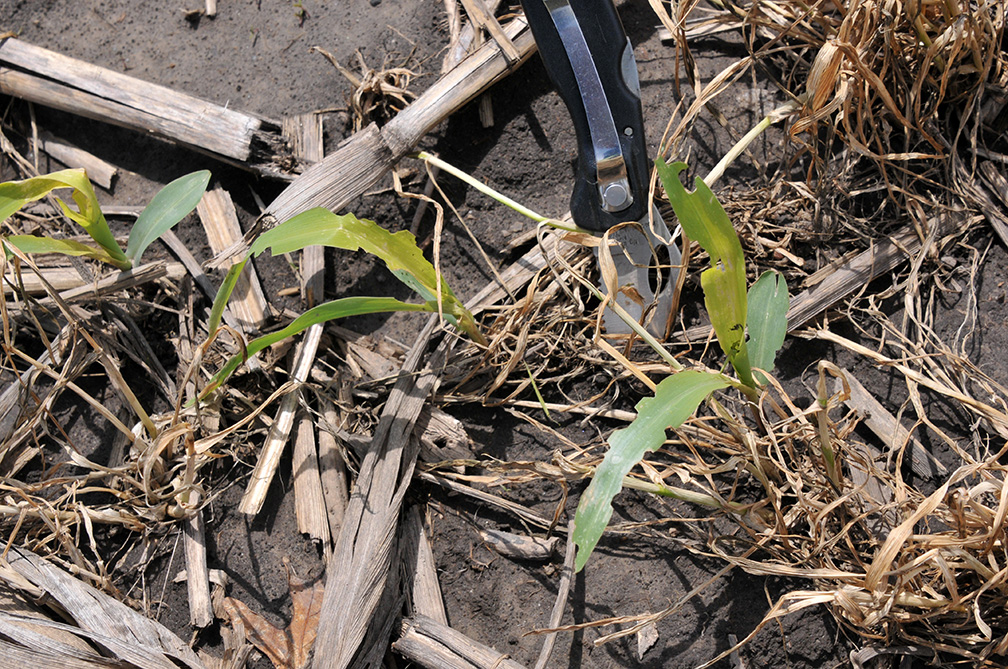Over the past six weeks, armyworm moth captures at the Purdue Ag Research Centers (see accompanying “Armyworm Pheromone Trap Report”) have been variable. The last few weeks of catches in Whitley County (NE Indiana) have been impressive! What do they mean? They are indicative of risk level, but not a guarantee and act as a reminder to conduct timely scouting in high-risk fields when larvae are actively feeding, now through late May. The increased popularity of cereal rye as a cover crop presents new opportunities for egg-laying females to find suitable food sources. The timing of planting this year, where many cover-cropped or weedy fields may be “planted green” is not helpful to those trying to avoid hungry armyworms.

Early armyworm damage to small grain leaves, starts as window-pane-like feeding then progresses to leaf notching. (Photo Credit: John Obermeyer)
Like every year, some (true) armyworm moths can overwinter here, but some are also blown here from states to the south and west. Don’t confuse this annual pest with the fall armyworm (different species, different life cycle and cannot overwinter here) that doesn’t arrive until mid-later summer. The fall armyworm caused a stir late in 2022 with damage to many forage fields, especially alfalfa. Contrast this with the (true) armyworm’s preferred hosts, that being grasses. Highest risk crops for egg laying are where dense grassy vegetation, e.g., wheat, grass hay, grass cover crops exist. Ideally, grass cover crops, will be terminated 2-3 weeks before corn emergence to prevent the “green bridge.” With this spring’s wet and windy weather, spraying of cover crops has been delayed and the 2-3 week host-free window hasn’t been possible.
Armyworm larvae, from 0.5 to 0.75 inch long, can be found mostly by the damage they cause to small grain and seedling corn leaves. Larvae feed from the edge to the midribs of grassy leaves, giving a ragged appearance. Larvae mostly hide during the day under crop residues or soil clods. Heavy infestations, left unchecked, can denude corn/small grains/grass hay seemingly overnight. Once armyworm get to 1.5 inch long, they will climb the small grain plants and clip heads and then the destruction and carnage really starts accelerating. Concentrate your scouting efforts where the growth of small grains/cover crops were the most lush in the field. Happy scouting!



